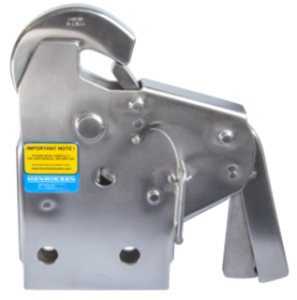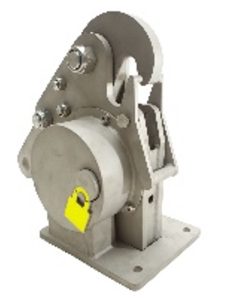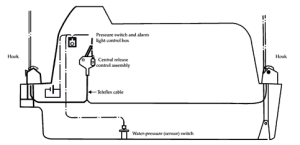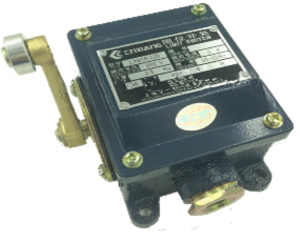4. Launch and Recovery
4.1 Launching Arrangements
All Davit systems must:
- Be able to lower & recover a fully loaded & equipped r/b against a 10°trim & 20° list either way
- Tankers, chemical tankers & gas carriers at greater angles
- Operable only by gravity or stored mechanical power
- Actuated by one person at deck side with continuous view of boat, or from within the boat
- Suitable for launch & recovery under severe weather conditions
- Minimum maintenance and all parts readily accessible
- Winch brake able to withstand static test of not less than 1.5 maximum load
- Dynamic test of not less than 1.1time maximum load
- Other parts of launching system to withstand static proof load test of 2.2 x maximum load shall remain effective, as far as possible, under conditions of icing
All lifting devices must:
- Be fitted with a powered winch motor of capacity to raise the boat from the water with its full complement of persons & equipment.
- Hoisting speed of not less than 0.3 m per second
- Recovery time (hook on to disembarkation) shall not be more than five (5) minutes.
- Efficient hand gear to be fitted for recovery.
- Cranks or hand wheels shall not be rotated by moving parts when rescue boat is lowered or hoisted.
- Limit or proximity switches, to be fitted if davit arm is recovered by power.
- Foul weather recovery strops shall be provided for safety if heavy fall blocks constitute a danger.
- Embarkation and recovery arrangements shall allow for safe & efficient handling of a stretcher case.
Release Hooks
- Release hooks which can be found on rescue boats are of two types:
- Off-load The load has to be off the falls for the hook to release the boat. This is the more common type of the two and requires very little skill to operate it.

On-load: The load can be released with the load on it. Caution is always exercised around these release systems because of premature disengagement. Coxswain and crew should have a thorough knowledge of these systems.

Hydrostatic Release – Some On-load systems have a hydrostatic release on them which will keep them fail safe until the water pressure is great enough to activate it! Which means the boat will only disengage if waterborne. Never Override the HRM mechanism and drop the boat from the falls during a drill!

SOLAS requires that ships:
Shall be fitted with a device to dampen the forces due to interaction with the waves when the fast rescue craft is launched or recovered”.
- The winch shall be fitted with high-speed tensioning device which prevents the wire from going slack in all sea state conditions
- Lowering speed for a fast rescue craft with its full complement of persons and equipment shall not exceed 1m/s
- A fast rescue boat launching appliance shall be capable of hoisting the fast rescue boat with 6 persons and its full complement of equipment at a speed not less than 0.8m/s.
Many davit systems currently in use feature some kind of high-speed tensioning device. The aim is to reduce the high snatching loads that can occur if the main winch cable comes tight because of the wave motion. When the rescue craft is in the water with the davit cable attached the device has the capability of letting out or taking in a certain amount of winch wire at a fixed, low tension which keeps the rescue craft in contact with the water surface. This has the effect of reducing any loads that would otherwise occur from waves slamming underneath the hull. The winch operator may then wait for the ideal moment before recovering the craft without risking damage to the occupants.
On-Board Maintenance of Davits, falls and disengaging gear
MSC.1/Circ.1205[1]
Seafarers often change ships and sometimes are not familiar with the lifeboats on their ships. Casualties with lifeboat systems are often caused by poor understanding of the lifeboat systems, especially release gear systems. User-friendliness of manuals for lifeboat systems is, therefore, important to help prevent casualties.
The purpose of these guidelines is to encourage development of user-friendly manuals for operation and maintenance of lifeboat systems including launching appliances. These manuals should be easy to understand. The guidelines demonstrate the appropriate level of detail and use of illustrations in explaining the safe use of critical systems. Manufacturers of lifeboats and launching/recovery appliances are invited to make manuals easy to understand, taking into account these guidelines. The use of video materials in conjunction with printed manuals can be an effective tool for mariners who may not be inclined to read a manual.
Outline of Information contained in the training manual
- Method of checking proper closure of release hooks
- Launching operation
- Preparation before launching
- Setting painter
- Release of safety pin for winch hand brake lever
- Release of davit arm stop
- Boarding the lifeboat
- Launching procedure
- Release gear operation
- Painter release and lifeboat operation
- Recovery operation
- Resetting procedure of release hook
- Recovery procedure
- Stowage procedure
- On-load/off-load release gear system
- General
- Fore and aft hook units
- Release handle unit
- Hydrostatic interlock unit
- Inspection and maintenance
- General precautions
- Inspection and maintenance of lifeboat and release gear system
- Inspection and maintenance of launching appliances (davits and winches)
4.2 Safety Precautions during Launching and Recovery Launching
Pre-Launching checks:
- Painter is secured and in good condition
- Sponsons are fully inflated
- Grips are secured
- If it has a stern has a line ensure its in good condition.
- All equipment is in the boat
- Fall wires and release are in good condition
- If it has a rigid re-righting float, make sure plug is installed
- Cylinder and arming head for capsize has safety pin removed
- No debris in boat.
Hazards during Launch and Recovery
As in any drill or exercise, there is a potential risk of injury; a complete hazard assessment should be done for launching and recovery. Some of the Risks that may be encountered are:
| Launching Hazards and Prevention | |
| Hazard | Prevention |
| Risk of injury getting into the boat. | Use proper method for entering |
| Violent rocking of the boat at the Davit head | Hold grab rails |
| The pendulum effect while being lowered, higher freeboard has more risk. | Don’t stop the brake until waterborne |
| Ships rubbing strake can cause personal injury | Slow decent before the rubbing strake |
| Releasing the falls | Wear gloves and watch the floating block |
| Releasing the painter | Take strain off painter |
| Bow Wave sending you under the bow | Stay clear of the bow |
| Recovery Hazards and Prevention | |
| Hazard | Prevention |
| Colliding with hull | Come in at slight angles |
| Retrieving Painter | Have bows man kneel down to get painter |
| Hooking up falls | Have a spotter and someone to hook up |
| Pendulum effect | All crew members holding grab rails |
| Violent Rocking at the davit head | All crew members holding grab rails |
Personal Preparation when called to Rescue Craft
Any emergency will have its risk but planning for the worst is better than not being prepared. After hearing the ALARM muster with your PPE which should be dry suit or immersion suit, take extra PFD’s for casualties, put on helmet and gloves. SART and EPIRB should be taken with you and stored in the rescue boat. In extreme cases it may be impossible to launch the FRB, due to weather, fire collision etc.
Do not take unnecessary risks to the crew if it is life threatening.
Responsibilities
Coxswain: overall in charge of the FRB but has the responsibility of seeing the other crew members are adequately dressed. Stay in communication with the ship to keep the master informed.
Bows man: Release painter, lookout duties and casualty retrieval.
Sterns man: Release falls, lookout duties and casualty retrieval.
FRB’s are designed to have hand holds, grab rails, seat belts, bucketed lines and toe holds, these should be used during all evolutions of Boat work. Always have one hand for you and one for the boat!
Safety is everyone’s responsibility.
Launching Procedures
- Rig painter remove gripes
- Start Engine (except outboards)
- Communications established (Boats ready for letting go)
- Wait for master’s word for lowering then (lower the Boat)
- All crew hold grab rails inboard for lowering in designated positions.
- Release falls
- Power up and release painter.
- Turn outboard 10˚-20˚
- Pull away at slight angles, avoid bow and stern.
Recovery Procedures
- SART and EPIRB put in boat
- Communications (FRB coming alongside Ask to alter course for a lee)
- Pace with ship coming in at slight angles.
- Move forward of the falls to retrieve the painter line.
- Ease off power to hook up falls.
- Radio bridge all hooked up
- FRB crew hold on to grab rails for hoisting, shut engine down
- Disembark, children, elderly, ladies, men, and crew members.
- Install Gripes
- Have fuel topped off return EPIRB and SART
- Other procedures may be involved on your FRB and Davit system, make sure you know them!
4.3 Launching and Recovery in Rough Seas
- The same as launching in other conditions
- The crew will have to remain vigilant because the vessel may roll heavily
- Non persistent / Nontoxic oil can be used to quell breaking seas.
- With on-load systems, arm the system just above the wave and release when on the top of the swell. Off-load systems may require the boat to hit the valley of the swell to release, Be careful of the fall Block
- Some systems have self-tensioning winches to retrieve the block once released
- May have to fend off forward to get released from hull.
4.4 Drills in Launch and Recovery
Hook on / Release process
The hook-on and release process is considered to be the area where the crew are most at risk and despite the introduction of specialized hooks this still presents the area that tends to limit the conditions under which the FRC can be used. In particular, it is the connecting of the hoist wire that presents the challenge and limitation for the launch and recovery operation.
There are three main requirements of an FRC to improve the safety of the crew and the effectiveness of the release and hook-on procedure:
- That the FRC provides a stable platform when it is alongside the mother ship during the launch and recovery procedures. This means that the impacts alongside the ship are minimized, and the jerking pull on the painter is reduced.
- That the crew can locate themselves securely in the boat during the launch and recovery procedures.
- That the release and hook-on procedures are simple, quick and effective and can be operated preferably one-handed.
The use of foul weather recovery strops
Most davits today have an attachment off the davit head for hanging off pennants. This is what will support the weight of the boat when foul weather strops are used.
The Foul weather recovery strop is an extension to the floating block with the same breaking strain. It allows for easy hook-up instead of using the heavy falls which can cause injury to crew or knocked out of the boat.
- When coming alongside hook-up the Foul weather recoveries strops and raises it to the embarkation level and secure it.
- Secure the hanging off pennants with a shackle.
- Lower the falls and take off the Recovery Strop.
- Hook the floating fall block back into boats hook.
- Secure in chalks.
Limit Switches
Limit switches have to be on all electrically operated davits. This is protection against the falls being hoisted beyond there workable area, which will protect the wire from Parting. This is only a safety device and should never be relied upon to stop the travel protection, always ensure that it is operational by pushing the switch back manually while power is on.
Limit switches prevent from bringing fall wires beyond their maximum travel.

Davit Proximity switch: is a sensor switch that activate when the Davit is just about in stowed position.
Drills in launching and recovery of fast rescue boats (Practical)
See last page of manual on Performance Requirements.
Image Credits
- Henriksen. (n.d.). Henriksen Geared Off-load Hooks. https://hhenriksen.com/hmkg/
- Scan Pacific Marine. (n.d.). On Load release hook. http://www.scanpacificmarine.com/conventional-lifeboats
- Transportation Safety Board of Canada. (2000). Image 3 in Marine Investigation Report M00W0265. https://tsb.gc.ca/eng/rapports-reports/marine/2000/m00w0265/m00w0265.html#Figure_3
- Mehr Technical Service. (n.d.). Limit switch. https://www.mehrshop24.de/Limit Switch
- IMO. (2019, June 26). Revised guidelines for developing operation and maintenance manuals for lifeboat systems[MRC.1 Circular.1205/Rev.1]. https://www.imorukes.com/MSCCIRC_1205.html ↵
